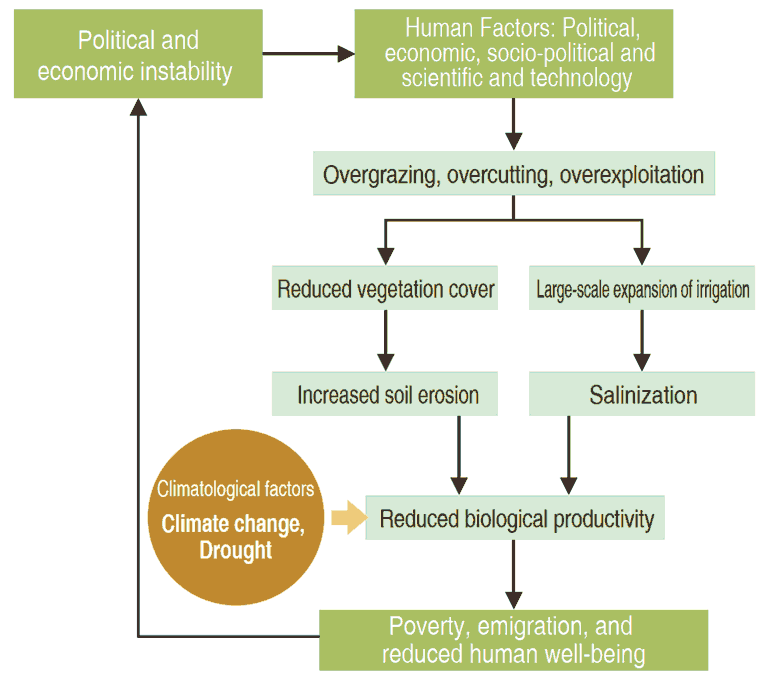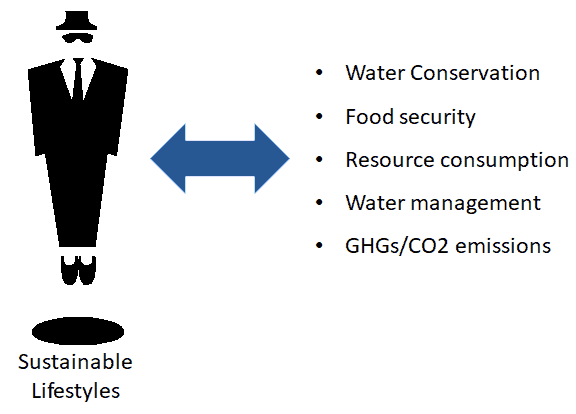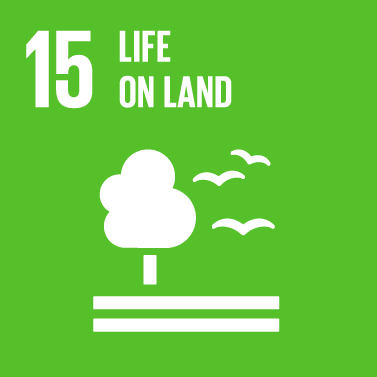 |
Hari Srinivas |
|
Concept Note Series E-172. October 2022
|
|
Desertification is more than just deserts.
|
Desertification is broadly defined as the process of fertile land transforming into desert typically as a result of deforestation, drought or improper/inappropriate agriculture. Such land degradation (typically happening in arid, semi-arid and dry sub-humid regions) results from numerous factors, including climatic variations and human activities such as urban development and agricultural practices.
The starting points are clear: A growing human population and unsustainable consumption are putting tremendous pressures on the natural resources we depend on for our everyday lives. The misuse of land and water is changing fertile land into deserts.
 Human factors in Desertification
Source: Ministry of Environment, Japan
Human factors in Desertification
Source: Ministry of Environment, Japan
|
|
According to the GEF, unchecked, desertification can lead to: food shortages, volatility and increases in food prices caused by declines in the productivity of croplands; heightened impacts of climate change globally caused by the release of carbon and nitrous oxide from degrading land; and the threat of social instability from the forced migration that will result from desertification.E
Recognizing the threat of land degradation, member-states of the United Nations established the Convention to Combat Desertification (UNCCD) nearly 25 years ago, in 1994. It is a legally binding agreement between the partner nations to work together to achieve sustainable land management. All member countries of the UNCCD recently agreed to fight desertification and restore degraded land by 2030.
|
Seeking practical solutions
|
|
Urban areas are directly vulnerable to desertification. In particular, they are the main recipients of desertification-induced migrants forced to leave their land because of food insecurity, poverty, wood and water shortages, and conflict. Cities represent a natural link between rural areas and national governments.
Furthermore, they can adopt effective policies for encouraging change. Their consumption patterns, trade links with rural areas, lobbying capacity at the national level, and ability to assist both rural areas and other cities are just a few examples of the levers that local authorities can manipulate in the fight against desertification.
- UNCCD
| |
 The Cyclical Linkages between Cities and Desertification
The Cyclical Linkages between Cities and Desertification |
The urban precendences of desertification is better understood now - it is the over-consumption of natural resources that puts excessive pressure on nature and its capacities to provide our sustenance. This aspect of desertification is in fact a cyclical process.Cities are significantly affected by desertification processes in the form of food shortages, water availability or disaster hazards and risks. But cities also initiate desertification processes through unsustainable consumption patterns.
Desertification today is essentially the abuse of ecosystem resources. caused by a number of factors, including:
- Deforestation and tree cover loss
- Soil degradation
- Soil erosion
 Lifestyles and Desertification
Lifestyles and Desertification |
- Over fertilization
- Soil salinization
- Aquifier over-exploitation
- Intensive farming
- Over-grazing
- Climate change due to human activity
- Soil acidity
Therein lies the solutions to desertification that is now being implemented: soil conservation programmes consisting of
terrace farming to prevent/reduce erosion, construction of check dams,
vegetation restoration and reforestation, etc.
At the core of the basket of solutions to reverse the trend of desertification lies in our cities and the urban lifestyles that its residents lead within it. Sustainable lifestyles (i.e. using natural resources within nature's capacity to replenish it) has significant externalities for a number of aspects including water conservation, food security, resource consumption, waste management, and - the elephant in the room - GHGs and CO2 emissions.
Cities are undoubtedly affected by desertification processes, but cities also have a significant role to play - directly or indirectly - in reversing the processes of desertification.
With dire medium and long term impacts of desertification on cities, much can be done to arrest and reverse the processes of land degradation. Many of these are well known, and are touted as solutions for many of the global environmental problems we face today, but need to be implemented in an integrated and holistic manner.
Cities and local governments have approached the problems with planting more trees and reforestation/rewilding programmes. Projects have targeted improving soil quality through innovative agricultural practices, integrating such approaches with appropriate water management policies (for example, watershed conservation or rainwater harvesting).
Cities have also attempted nature-based solutions such as protecting vegetative cover, constructing stone lines and other soil stabilization techniques to prevent soil erosion from wind and water flow.
Some policies have attempted alternative livelihoods that do not depend on traditional land uses, such as dryland aquaculture, greenhouse agriculture and tourism-related activities, which are less demanding on local land and natural resources, and provides sustainable income.
 Protect, restore and promote sustainable use of terrestrial ecosystems, sustainably manage forests, combat desertification, and halt and reverse land degradation and halt biodiversity loss. Protect, restore and promote sustainable use of terrestrial ecosystems, sustainably manage forests, combat desertification, and halt and reverse land degradation and halt biodiversity loss. |
- Explore further:
- • UN Convention to Combact Desertification (UNCCD)
- • Sustainable Development Goal #15: Life on Land
- • 17 June: World Day to Combat Desertification and Drought
|